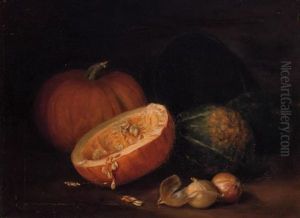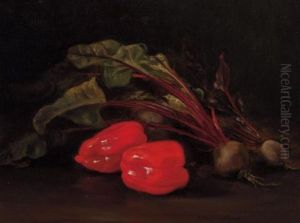Ida Pulis Lathrop Paintings
Ida Pulis Lathrop was an American painter known for her still-life paintings, landscapes, and portraits. Born on November 12, 1876, in Albany, New York, she was part of a creative family where her talents were nurtured from a young age. Her mother was an amateur artist, which likely influenced Ida's early interest in art.
Lathrop studied at the Art Students League of New York and was a pupil of the influential artists William Merritt Chase and Harry Siddons Mowbray. Chase, known for his impressionist landscapes and beautiful still-life paintings, had a considerable impact on Lathrop's style and technique. She also studied abroad, which was quite common for American artists at the time who wished to refine their skills and absorb European influences.
Throughout her career, Ida Lathrop was a prolific artist, exhibiting at various venues, including the prestigious National Academy of Design and the Pennsylvania Academy of the Fine Arts. She was also a member of the Albany Institute of History & Art and the Plastic Club of Philadelphia, which was an important women's art organization of the time. Her works were well-received, and she won several awards for her paintings.
Lathrop's art often depicted domestic scenes, flowers, and the landscapes of the Hudson Valley. Her style was characterized by a strong sense of realism and meticulous attention to detail, particularly evident in her still-life work. She captured the textures and colors of her subjects with great precision, which gave her paintings a tactile and inviting quality.
Ida Pulis Lathrop's legacy is also tied to her family, as her children, including daughters Gertrude Käsebier Lathrop and Dorothy Lathrop, became accomplished artists in their own rights. Gertrude was a well-known sculptor, and Dorothy gained fame as an illustrator and writer, even winning the inaugural Caldecott Medal for children's book illustration in 1938.
Lathrop continued to paint throughout her life, and her work has been preserved in various private collections and museums. She passed away on March 26, 1965, in Albany, New York. Her contributions to American art, particularly in the realm of still-life and her role as a female artist in the early 20th century, remain notable in the history of American art.





